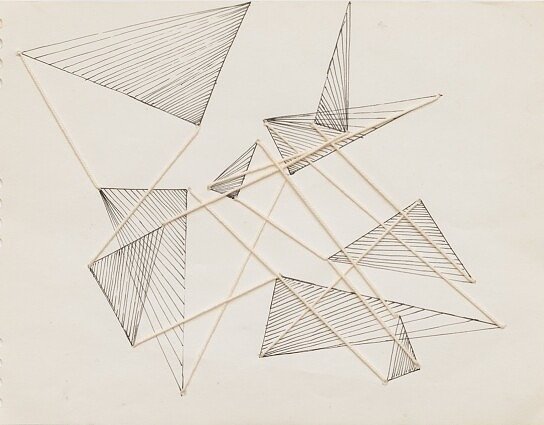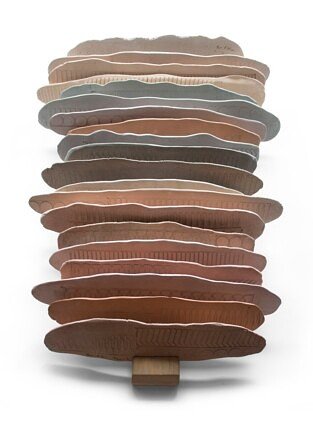Nedda
Guidi
Biography
After completing her university studies, she taught as a professor and simultaneously she devoted herself to painting and later to sculpture with ceramic as medium, interpreted as the possibility of multiple experiments outside the traditional canons. Since the end of the 50s, she has worked on themes and projects in which, from time to time, specific technical problems would be faced in relation to contemporary art. From 1961 to 1965 she worked on the “Fogli” theme, foils of terracotta differently treated. From 1965 she implements a modular experience that will imprint all her work. In 1973, she has discovered that using in the laboratory component of colored clays with metal oxides, chromatic results in the sculpture were obtained. Since 1961, she was part of important exhibitions in Italy: L’informale in Italia (Bologna 1981), Scultura e ceramica nell’arte italiana del XX secolo (Bologna 1985), Maestri della Ceramica (Faenza 1986), and abroad: Prague, Ankara, Auxerre, Madrid, Seul and Japan. In 2014 she held a double solo show with Rosanna Lancia at Monserrato Arte 900 in Rome. After her death the Gubbio Biennale has dedicated her an anthology together with Mirella Bentivoglio.

Critical text
“The art of ceramics is so persuasive that it constitutes a veritable trap for whoever practices it. One is always tempted to maintain the porousness and the hairline cracks that occur, the lumps in the paste, to emphasize the occasional veining, the streaks left by the hands, the finger prints, the tears and lacerations that are so fascinating.
And then the smoking produced by the kiln, those beautiful browny-blacks which recall the red hot heart of a volcano or the dawn of humanity. One can thus speak of a return to the origins, of the four pre-Socratic elements, of an act of reconciliation with the earth, mother earth as a womb in which all the anxieties and scissions of a world of which we can no longer demand the ultimate answers to life can be placated. And it is thus that ceramics celebrates its annals and the hyperbolisation of its intrinsic beauty in a sort of recompensanting abandon, in the pleasurableness of an haute cuisine which satisfies the most sensory part of us.
But ceramics isn’t just this. It can also be an idea, a problem which materialize, in the spirit of precision, through a constant elaboration of the raw material from which one decants the most obvious potentialities, restoring to ceramics the function of the artistic object.
Thus it becomes limpid terracotta, clear and limpid like a bell, fired to the right point, leaving chance only a very slim margin in which to insert itself. And the traces left by its manufacture restore the object to itself, through its being there, ready to provoke and raise questions as to how and why it was made.”
_Nedda Guidi





